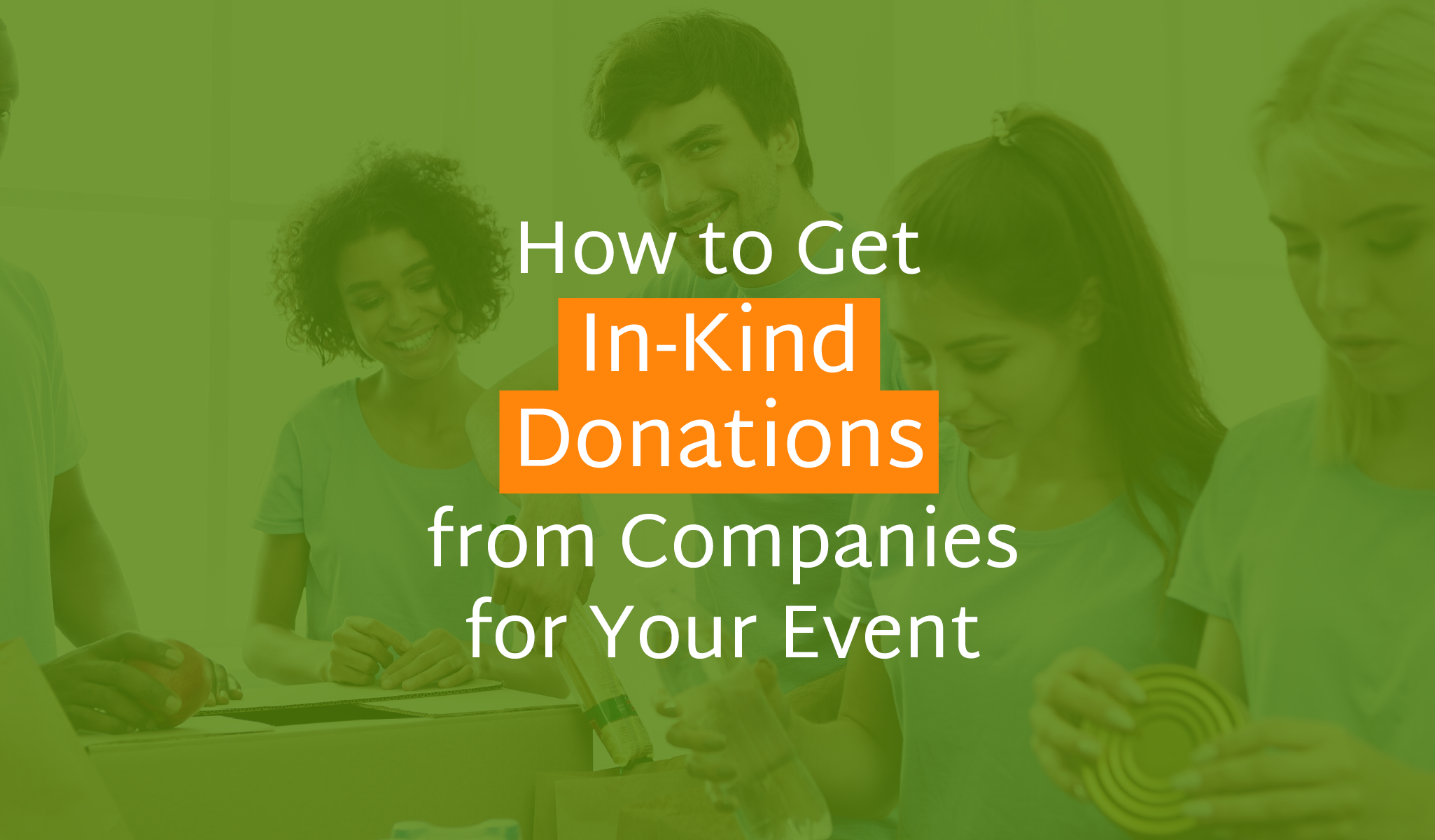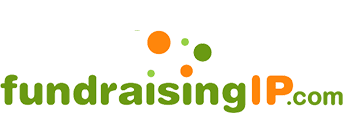
Securing in-kind donations from companies can significantly enhance your event by providing essential goods and services without the associated costs. These contributions not only reduce financial strain but also create opportunities for deeper corporate engagement, as businesses see firsthand how their products, expertise, or resources are being used to make an impact.
In-kind donations can range from catering and venue space to pro bono consulting or media coverage, making them incredibly versatile for nonprofits of all sizes. However, obtaining these contributions requires a strategic and thoughtful approach. Nonprofits must be clear about their needs, target the right businesses, and communicate effectively to show the mutual value of such partnerships.
This comprehensive guide will walk you step by step through the process of effectively securing in-kind donations, ensuring that your event has the resources it needs to succeed without stretching your budget.
- Understanding In-Kind Donations
- Identifying Your Needs
- Targeting Appropriate Donors
- Crafting Persuasive Donation Requests
- Utilizing Multiple Communication Channels
- Providing Recognition and Building Relationships
- Following Up and Expressing Gratitude
By treating in-kind donations with the same care and planning you devote to monetary fundraising, your nonprofit can build long-lasting partnerships that go beyond one-time contributions. These collaborations not only strengthen your events but also establish a network of support that can fuel future initiatives.
Understanding In-Kind Donations
In-kind donations are essentially any non-monetary contributions made by companies, individuals, or organizations to support a nonprofit. Instead of writing a check, donors provide goods, services, or other resources that the nonprofit would otherwise need to purchase.
These types of in-kind donations can take several forms, including:
-
Tangible Goods: Physical items such as food, beverages, clothing, office supplies, equipment, or auction items. For example, a local grocery store might provide snacks and drinks for a charity run.
-
Services: Professional expertise offered pro bono, such as legal advice, marketing support, graphic design, photography, or IT troubleshooting. These services can save nonprofits thousands of dollars in overhead costs.
-
Intangible Items: Non-physical contributions like advertising space, public service announcements, meeting or event space, or access to networks and contacts.
-
Hybrid Contributions: Some companies combine monetary and in-kind support—for example, covering printing costs while also providing a professional speaker for your event.
For nonprofits, in-kind donations reduce expenses and often improve the quality of events. Instead of cutting corners on catering or skipping professional design for materials, in-kind support allows organizations to deliver polished, professional experiences. For donors, these contributions provide opportunities to showcase their expertise, demonstrate corporate social responsibility (CSR), and connect directly with communities.
Identifying Your Needs
Before reaching out to potential donors, it’s important to clearly define what your event requires. Many nonprofits make the mistake of approaching businesses without a detailed plan, which can lead to vague requests and fewer results.
Assessing Requirements
Start by conducting a thorough assessment of your event’s needs. Consider categories such as:
-
Catering and food services for participants or VIPs.
-
Venue space if you need a meeting hall, conference room, or outdoor location.
-
Decorations and supplies, such as table linens, signage, or printed programs.
-
Entertainment or speakers to make the event engaging.
-
Auction or raffle items for fundraising events.
Think beyond the obvious. For instance, could you use pro bono legal advice to draft vendor contracts? Or donated printing services for promotional flyers? Expanding your perspective can reveal valuable opportunities.
Developing a Wishlist
Once your needs are identified, create a detailed wishlist. This list should specify quantities, timelines, and intended uses. For example, instead of requesting “food donations,” ask for “150 boxed lunches for participants on October 10th.”
Sharing your wishlist on your website or in outreach materials makes it easy for potential donors to identify how they can help. It also shows that your nonprofit has carefully planned its event and respects the donor’s time and resources.
Targeting Appropriate Donors
After defining your needs, the next step is identifying which companies or organizations are best positioned to meet them. Not all businesses will be a fit, and targeting the wrong ones can waste valuable time.
Researching Companies
Start by researching companies that align with your mission or event theme. For example:
-
A health-related nonprofit might approach gyms, wellness brands, or hospitals.
-
An environmental nonprofit might target recycling companies, eco-friendly businesses, or outdoor gear retailers.
-
An education-focused nonprofit might look to book publishers, tutoring centers, or tech companies.
Examine companies’ CSR initiatives and past donations to gauge their likelihood of supporting your cause.
Leveraging Networks
Don’t underestimate the power of personal connections. Ask board members, staff, and volunteers if they have relationships with decision-makers at local businesses. Warm introductions often lead to better results than cold calls or emails.
Community events, networking mixers, and professional associations are also excellent places to meet potential donors. By embedding yourself in these networks, you position your nonprofit as a credible and approachable partner.
Crafting Persuasive Donation Requests
Once you know who to ask, the next challenge is how to ask. A strong donation request balances professionalism with passion and highlights the benefits to both the nonprofit and the donor.
Personalizing Appeals
Generic requests rarely inspire action. Personalize your appeals by tailoring them to each company’s values and CSR priorities. For instance, if you’re approaching a local printing company, explain how providing event programs will allow them to showcase their work in front of 300 community leaders.
Highlighting Benefits
Make sure to highlight what the donor will gain from their contribution. Benefits may include:
-
Tax deductions for donated goods or services.
-
Public recognition at the event, through signage, programs, or announcements.
-
Marketing opportunities via your nonprofit’s social media channels, newsletters, or press coverage.
-
Employee engagement if their staff can volunteer alongside providing donations.
By framing your request as a partnership rather than a favor, you make it more compelling for potential donors.
Utilizing Multiple Communication Channels
To maximize outreach, nonprofits should use multiple communication channels to reach out to potential in-kind donors. After all, relying on just one method limits your reach and reduces your chances of success.
We recommend implementing a combination of:
Direct Outreach
Send personalized letters or emails to company leaders or CSR representatives. These should include your wishlist, details of your event, and clear instructions on how they can contribute. Following up with phone calls or in-person visits can add a personal touch and strengthen your pitch.
Social Media
Use platforms like LinkedIn, Facebook, and Instagram to announce your needs. Share your wishlist, highlight sponsorship opportunities, and tag potential donor companies to capture attention. Social media can also create momentum by allowing supporters to share and amplify your requests.
Events and Presentations
Consider hosting informational sessions or networking events where local businesses can learn about your nonprofit’s work. These gatherings provide a low-pressure environment to build relationships and introduce donation opportunities.
By diversifying your communication strategies, you ensure your message reaches a wide range of potential donors.
Providing Recognition and Building Relationships
Securing an in-kind donation is only the beginning. Building lasting relationships ensures continued support for future events and initiatives.
Acknowledging Contributions
Publicly recognize donors through signage, event programs, newsletters, and social media shout-outs. Make sure your recognition is proportional to the size of the donation—major contributions should receive prominent visibility, while smaller contributions still deserve meaningful acknowledgment.
Maintaining Engagement
After the event, share updates on how the in-kind contributions made a difference. Send photos, testimonials, or impact reports to show donors the results of their generosity. Invite them to future events and keep them informed about your organization’s ongoing work.
This consistent engagement helps transform one-time donors into long-term partners who feel a genuine investment in your mission.
Sending Thank-You Notes
Send personalized thank-you notes or emails to each donor. Go beyond a generic message; acknowledge what they provided and describe the specific impact it had. For example, “Your donation of 200 water bottles kept our marathon participants hydrated and contributed to raising $50,000 for cancer research.”
Consider following up with a phone call or even a small recognition gift for major donors. These gestures build goodwill and encourage repeat contributions.
Conclusion
Securing in-kind donations from companies can significantly enhance your event while reducing costs. By understanding your needs, targeting appropriate donors, crafting persuasive requests, leveraging multiple communication channels, and building strong relationships, your nonprofit can establish a sustainable system for obtaining in-kind contributions.
Remember, in-kind donations are not just about saving money; they are about creating meaningful partnerships that benefit both nonprofits and businesses. When approached strategically, these contributions can transform your events into impactful, well-supported experiences that resonate with both your audience and your donors.
Sourcing More In-Kind Donations with Double the Donation
Ready to raise more with corporate grants and in-kind gifts for your next event? Double the Donation is your go-to resource for tapping into corporate sponsorships and donations with ease. Our comprehensive database and tools are designed to help you find and manage corporate support, allowing you to focus on creating an impactful event.
Don’t miss out on valuable partnerships that can take your event to the next level. Get a demo today and see how we can help you double the in-kind donations for your cause!
